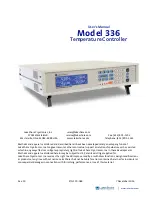
ENGLISH
- 33 -
6.1 - LINE POWER SUPPLY
The “L” and “N” inputs are prearranged for the line voltage
connection. This must be 230Vac 50Hz.
6.2 - FLASHING LIGHT
The connected lamps must have 230V with 15W maximum
power. Thanks to the “HAZ” dip-switch 6 (see Paragraph 3.1),
the control unit can supply oscillating or continuous voltage
based on the warning light connected (with or without integrated
oscillating circuit)
6.3 - AUX CONTACT
By default, the AUX contact is able to control an electric lock
(customisable as courtesy light) with 12V, by giving a 2-second
pulse for every movement command received from the control
unit. However, this output can be customised with the advanced
programming functions mentioned in Paragraph 10.
6.4 - SAFETY DEVICES
m
To ensure correct operation of the accessories,
eliminate the standard supplied connection.
m
If multiple devices are connected on this contact, they
must be series connected. If one or more photocell pairs are
connected, the receivers must be alternated.
“PHO1” CLOSING PHASE SAFETY DEVICES
It is possible to connect devices (e.g. photocells or edges with
microswitches) with normally closed (NC) contact to the “PHO1”
input.
These devices intervene during the gate’s closing phase:
-
during the closing phase they invert the movement direction
and re-open the gate fully;
-
during the opening phase they have no effect;
-
with the gate closed they do not intervene;
-
with the gate open they lock the closing commands.
“PHO2” OPENING OR OPENING/CLOSING PHASE SAFETY
DEVICES
It is possible to connect devices (e.g. photocells or edges) with
normally closed (NC) contact to the “PHO2” input.
These devices are actuated while the gate is moving, according to
the setting of DIP5.
DIP5 = ON (functioning as photocells):
-
in closing phase they invert the movement as soon as the
device has been cleared
-
in opening phase they continue the movement as soon the
device has been cleared
-
if the access is closed they inhibit the opening commands.
-
if the access is open they inhibit the closing commands.
DIP5 = OFF (functioning as opening edge):
-
during the closing phase they have no effect
-
during the opening phase they re-close the gate fully
-
with the gate closed they lock the opening commands.
-
with the gate open they have no effect.
6.5 - GATE OPEN PILOT LIGHT
If the photo-test which is deactivated by default (see Paragraph
11.1) is not used, it is possible to connect a gate status pilot
light to the “GSI” input. This light will signal the gate’s position,
specifically:
• gate closed: light off
• gate open: light turned on in fixed mode
• gate opening: light flashes
• gate closing: light flashes fast
m
The led must be powered with 24VDC, max 3W.
6.6 - WIRED COMMANDS
The inputs for the start, stop and pedestrian opening wired
commands can be customised to open, stop and close (Paragraph
12.1).
Moreover, they can be locked to prevent tampering with the
system (Paragraph 12.2).
START CONTACT
The “START” input can be used to connect normally open
clean contacts (present, for example, in selectors or buttons) for
executing commands that pilot the automation, and settable
through dip-switch 3.
m
COMPANY FUNCTION: if, with the automation closed,
the START contact is pressed and held closed (for example,
through a timer-controlled or bistable relay), the control
unit opens the gate and the automation does not accept
closing commands (neither automatic nor wired) until the
contact is reopened.
In this mode, dip-switch 3 STEP is normally put to OFF and
dip-switch 4 AUTO to ON, to ensure that the gate never
stops during the opening phase.
m
If multiple START contacts are connected, connect the
contacts in parallel.
PEDESTRIAN START CONTACT
The pedestrian function consists of a partial opening.
To customise the opening width, the pedestrian programming
sequence must be carried out (see Paragraph 8.2).
This opening can be controlled via radio, by programming the
transmitter (see Paragraph 7.2), and/or via wire by connecting the
latter to the “PED” input of the normally open contacts (present,
for example, in selectors and buttons).
STOP CONTACT
The “STOP” input can be used for connecting normally closed
contacts (normally present in buttons), to immediately lock all the
system’s movements.
To restore the normal operating mode, the stop contact must be
re-closed.
6.7 - ANTENNA
The antenna is used for enhancing the reception of signals of the
radio transmitters. The control unit has, by default, a wire that
functions as an antenna already connected to the PCB.
An external antenna can be connected to terminals 1 and 2 of the
control unit.
m
If an external antenna is connected, the series
connected wire must be disconnected.
Содержание TORQ-A
Страница 2: ...300 3 325 88 5 88 5 161 177 ø70 325 5 150 185 ...
Страница 24: ...ITALIANO 22 ...
Страница 46: ...ENGLISH 44 ...
Страница 68: ...FRANÇAIS 66 ...
Страница 90: ...ESPAÑOL 88 ...
Страница 91: ......
















































